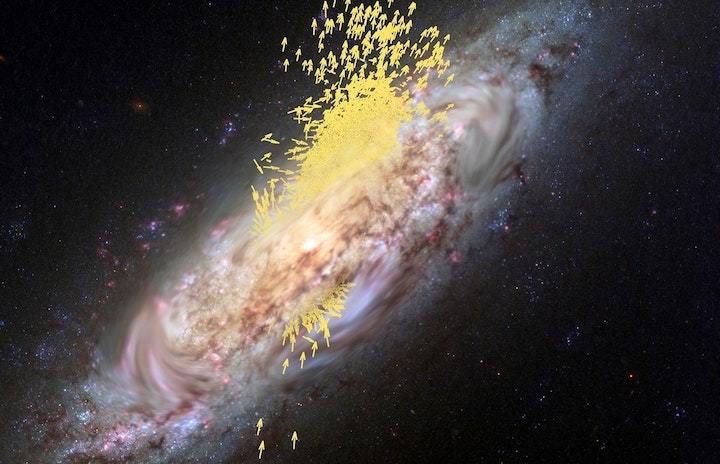23.07.2019

Artist's impression of the merger between the Gaia-Enceladus galaxy and the Milky Way.
The Milky Way achieved its present form about 10 billion years ago when it merged with a smaller, neighbouring galaxy, new observations and modelling show.
Researchers led by astrophysicist Carme Gallar of the Universidad de La Laguna in Spain took advantage of measurements taken by the European Space Agency’s Gaia space observatory, which was launched in 2013 for the dedicated purpose of mapping the positions of stars with unprecedented accuracy.
They took the new data and subjected it to the two most commonly used techniques for estimating the age of stars – comparison with existing stellar models and what is known as colour-magnitude diagram fitting.
The approach was applied to Gaia measurements for the galaxy’s two outer rings of stars – known as the blue and red haloes – and what astronomers call its thick central disc.
The results showed that the stars in the haloes were all more ancient than those in the disc, with those in the former category all exceeding 10 billion years old.
The sharp age difference, the researchers say, confirms and, for the first time, accurately dates a titanic encounter between the progenitor of the Milky Way and a neighbouring, smaller galaxy, dubbed Gaia-Enceladus.
The different colours of the two haloes are an indication of the iron content of their respective stars. Red stars contain more of it than blue ones. Colour also often indicates great age. Until now, thus, astronomers assumed that the Milky Way’s blue halo was younger than its red one.
Gallar and colleagues used Gaia data to show that this is not the case. Their modelling reveals that the red and blue haloes contain stars of identical age, and that each region started and ceased star production at about the same time.
The difference in iron content, the researchers say, is a function of a galaxy size – more massive galaxies contain larger amounts of metal than smaller ones. Thus, they write, the result “means that the stars in the red sequence of the halo, being more metal-rich, must have formed in a galaxy that was more massive than the one where the stars in the blue sequence were formed.”
The blue halo, they say, represents the remnants of Gaia-Enceladus – a galaxy they estimate to have been around a quarter of the size of the proto Milky Way.
Quelle: COSMOS

